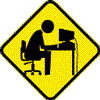At random times the computer will suddenly reset itself!
It will reset itself when inactive. (However, the computer has once reset itself while a program was running.) But after this event, the computer will no longer detect the Hard Disk nor boot until after a few minutes of leaving the computer shut-down. After this short timeout, re-powering will result in a clean boot; but the resetting continues.
Is this a hardware problem? I'm not sure.
The following information is Extra, and I hope it will help:
1. We have recently installed our first wireless router (Belkin G wireless router), which is transmitting WI-FI to the family's wireless devices, but mainly for the other PC running XP.
Both computers have Spyware protection installed, but the networks are only protected by Window's Firewall; we have not setup any third-party network defenses.
2. Even before the problems above, this next event has occurred for quite some time now. After rebooting the computer and after the Welcome screen, the OS will not allow any Start-menu interaction until after Windows plays the "Windows XP Startup" tune, which doesn't play until after a few minutes of waiting. I say that it hangs temporarily, than resumes normal behavior. Such behavior has been present since a malware attack some time ago. The malware problem has been countered and conquered due to the unforgettable help of you friendly Geeks to Go helpers! Thank you guys so much!
I hope this information will be helpful. ^_^
System Specifications:
Operating System: Windows XP Home Edition
Thanks again! If there is any further information needed,just let me know! All right, be Blessed! ^_^
- Little Preacher Man.
Edited by Leifgreen, 28 December 2009 - 07:15 PM.
















 Sign In
Sign In Create Account
Create Account

